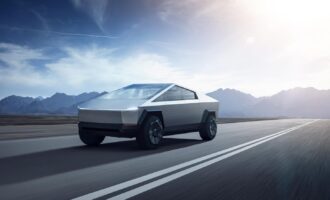Is your relationship with your car about to change?
By Aaron Stone
Advances in artificial intelligence (AI) are about to lead to many changes in our daily lives. One of the more notable changes will be the introduction of self-driving vehicles. There are some changes which are obvious, and others which aren’t. For most households, buying a car is the second biggest expense after a house. Surveys have shown that today the typical car is parked 95 to 97% of the time in the garage or a parking lot gathering dust. Many people enjoy driving, but are simply too busy earning a living or doing other things to use the car a larger percentage of the time.
Imagine a future in which your car can operate on its own, whether passengers are in it or not. Rather than having multiple cars in one household, perhaps none or one will be sufficient. The car could also drive itself to a filling station or service garage for maintenance on its own without the owner even being present. A few years ago, this would have all seemed like a fantasy or science fiction. However, the possibility of this happening is becoming more real every day.
Gary Parsons, global OEM and industry liaison manager at Chevron Oronite, highlighted some of the future scenarios while speaking at a centennial celebration for Chevron Oronite in May in New Orleans, La., where the company has an additive manufacturing facility nearby. A key role of Parsons’ team is uncovering regulatory trends and other developments which will impact the global petroleum additives and lubricants markets.
Undoubtedly, developments in this space are plentiful. Much like the arrival of electric vehicles, self-driving technology appears to be the new “arms race” for OEMs. Recognising the importance of this new wave of technology, traditional automakers, new electric vehicle specialists and non-traditional technology companies are all scrambling to get involved and successfully disrupt the automobile industry. At the same time, sharing economy companies such as Uber, Lyft, etc. have a keen interest in self-driving vehicles as driver labor is a major cost component.
Luxury car maker BMW recently teamed up with Intel and MobilEye, and has identified 2021 as the target date for releasing a vehicle requiring limited driver input (level four), the iNext. Ford Motor Company has created the Ford Smart Mobility Division and invested USD1 billion over five years into start up artificial intelligence (AI) company Argo AI to establish themselves as a leader in autonomous vehicle manufacture. Toyota, perhaps playing catch up to some auto manufacturers, late last year also announced a billion-dollar investment in AI technology with MIT, Stanford and the University of Michigan. Many other OEMs have similar partnerships and programs.
Perhaps most notable are the efforts of technology giants Apple and Google. With a war chest of USD246 billion in cash reserves, any market Apple looks to disrupt should be wary. In November 2016, Apple confirmed in a letter to the U.S. Department of Transportation that they are working on self-driving technology. Google announced their entry into self-driving cars way back in 2009 and commenced testing in California in 2012, arguably putting them ahead of major competitors. The internet search giant has previously indicated it plans to make cars available to the public in 2020 through Waymo, its automated car company. Honda, amongst others, are working with Waymo.
Ride-hailing companies Uber and Lyft are well aware of the path to profitability driverless cars offer, enabling dramatic reductions in operating costs and competitive rates to mass transportation. No surprise then that General Motors, the number 1 U.S. automaker, announced a USD500 million investment in Lyft and a USD580 million purchase of Cruise Automation in 2016, alongside plans to develop a network of self-driving cars with the ride-sharing services. In late 2016, Volvo invested more than USD300 million in Uber. It seems as if new relationships and announcements are being formed almost every week.
When developing vehicles capable of “sensing their own environment and navigating without human input,” much of the investment is in AI and sensors as the “primary enablers.” Many components and technologies which will be employed in self-driving cars have already been introduced in luxury cars.
For the uninitiated, what exactly is self-driving technology? It might seem a straightforward question, but in reality, the answer is not as simple. Self-driving technology does not necessarily mean a world without steering wheels, accelerators or brake pedals. Engine and vehicle standards organisation, SAE international, outlines six levels of vehicle autonomy; the amount of driver interaction required is a key determinant of each level.
Levels range from zero, where a motor vehicle may issue warnings to the driver but has no control, through to level five where no human intervention is required, aside from setting a destination. All on-road decisions are made by the vehicle to navigate safely to your desired location.
Level one technology is commonplace in modern vehicles today, such as adaptive cruise control to monitor following distance, parking assistance with automated steering, collision avoidance braking, lane keeping assistance, and reverse radars. Parsons says, these components will come together with others “to enable the self-driving vehicles.”
Level two vehicles, such as the Tesla Autopilot, are capable of accelerating, braking and steering by themselves, although drivers are required to monitor objects and events at all times. Several OEMs have made announcements on the imminent availability of level three and level four vehicles that can assume total control under all but the most unpredictable environments.
Eliminating operator input can provide up to 20% improvement in fuel economy, and notable reductions in greenhouse gas emissions, by mitigating rapid accelerations, speeding, and reckless driving behaviours. Parsons argues that improved driving performance could also provide extended drain intervals and improve equipment durability, thereby achieving the “big three” objectives of most OEMs (i.e. improved fuel economy, extended drains and engine durability).
At the Chevron Oronite centennial celebration where Parsons made his insightful presentation, he reiterated the global trend towards “mega cities.” By 2040 it is predicted that 75% of people in the United States will live within seven “mega regions.” Inevitably, alongside this trend comes swelling traffic, congestion and delays. Imagine if you could not only reduce congestion, but also improve productivity during your daily commute. Parsons says, higher levels of autonomous vehicles have the potential to make this a reality.
 Self-driving technology allows vehicles to travel closer together by “sensing what other vehicles are going to do before they do it,” says Parsons. Improved traffic density, and more efficient traffic routing and monitoring, will help to ease the pain of your commute. A possible spin off is consumers more willing to live further from city centres. In a driverless world, the ability to multitask, texting, calling or even working, without compromising driver safety will also mean less distracted drivers causing traffic hazards.
Self-driving technology allows vehicles to travel closer together by “sensing what other vehicles are going to do before they do it,” says Parsons. Improved traffic density, and more efficient traffic routing and monitoring, will help to ease the pain of your commute. A possible spin off is consumers more willing to live further from city centres. In a driverless world, the ability to multitask, texting, calling or even working, without compromising driver safety will also mean less distracted drivers causing traffic hazards.
Yes, there have been some high-profile accidents during the development of self-driving cars. The occupant of a Tesla Model S was killed in a collision with a truck while operating on autopilot on 7 May 2016 in Williston, Fla., U.S.A. A Google powered self-driving Lexus SUV was also involved in a crash in the state of California when a driver ran a red light and collided with the vehicle.
Despite these setbacks, experts believe the technology will enhance driver safety, potentially reducing the 40,000 deaths and 2.3 million injuries reported on U.S. roads last year. Volvo, one of the OEMs investing heavily in self-driving technology, has set the audacious goal that from 2020 there will never be a death in a Volvo car again. Self-driving vehicles are a key pillar to achieving this objective.
If these claims of improved safety eventuate, that could force regulators’ hands to outlaw driving your own vehicle in the future. While feasibly this “judgement day” may never eventuate, it does still raise the question of whether this technology can be more effective than human intuition.
Parsons detailed a “network that allows vehicles to communicate with each other at a very rapid speed,” therefore enabling smoother traffic control and improved safety.
Three technologies fundamental to dictating traffic movements through a communication network include V2V, V2I and V2P. Vehicle-to- vehicle (V2V) technology allow vehicles to communicate directly with one another. Cadillac has already introduced V2V on their 2017 CTS model, and the United States Department of Transportation is reportedly reviewing a proposal that by 2020 all new cars would be required to feature V2V technology.
Vehicle-to-infrastructure (V2I) communication alerts vehicles of the presence of specific infrastructure such as roadworks or traffic lights. A permanent beacon communicating with vehicles will notify in advance of the upcoming obstacle. Vehicle-to-pedestrian technology will notify automobiles of the presence of pedestrians or cyclists adorning a particular transmitting device – helping them “steer clear” of vulnerable road users.
OEMs are hopeful the introduction of self-driving will reverse a worrying trend of young people not getting their drivers’ license, and a decrease in the number of vehicles per household in the U.S. Parsons cited segmentation opportunities that may attract a wider cross section of people to the vehicles, including high content type vehicles. Such products could include gaming cars, virtual reality cars, music cars, or similar, he says. The technology also holds the potential to open up significant mobility options for non-traditional drivers such as the elderly or the disabled.
How this plays out remains to be seen. During his presentation, Parsons also highlighted a strong synergistic relationship between self-driving cars and the sharing economy. Individuals may not even own a car anymore, he suggests, citing a potential move from individual ownership of vehicles to fleets, or a service where you pay only for the time you use. This model could provide improved efficiency of infrastructure, lower upfront investment and a potential reduction in vehicle numbers.
From a lubricants and vehicle maintenance perspective, several changes may occur due to the introduction of self-driving cars and the sharing economy. First, the owner of the vehicle may not even be present when the car drives itself to have its oil changed. In those cases, the installer may play a more important role in deciding which lubricants to use. In the sharing economy, if ownership of the vehicles moves from private individuals to fleets, the passenger car engine oil market has the potential to become more like the commercial engine oil market with greater importance placed on extended drains and uptime. In both the sharing economy and with self-driving cars, the service intensity of each vehicle may increase as fewer vehicles accumulate more miles in a given period.
As Parsons pointed out in his presentation, the next 100 years for Oronite and its customers who serve the vehicle industry may look a lot different than the past 100 years.







